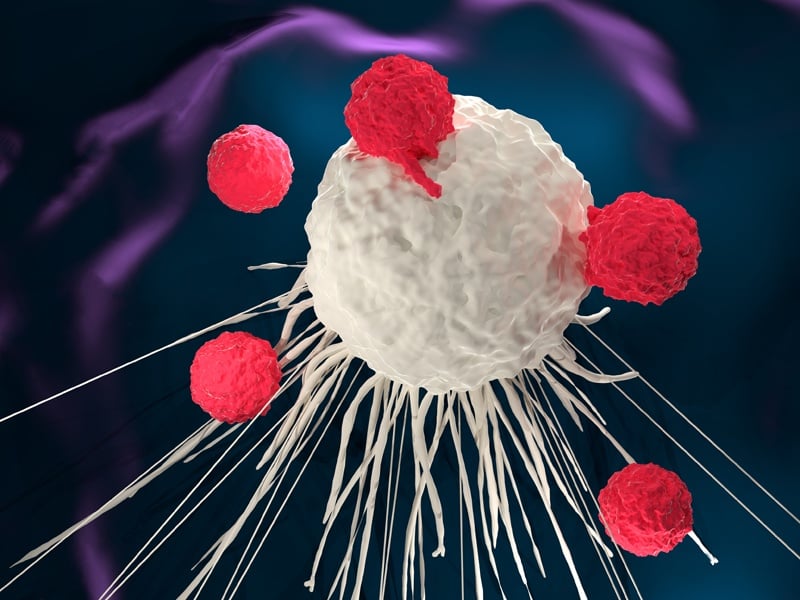Comparison Guide: huNOG® & huNSG™ Humanized Models

Humanized mice, encompassing human tumors and human immune cells engrafted on immunodeficient mice, have been widely used for many years in immuno-oncology, with developments to improve both the humanization and the translational value central to the next generation of models.
Previously our blog posts have reviewed humanized mice, looking at hPBMC vs hCD34+ models, how they differ, and how to select a model type to use. We briefly touched on the different types of HSC humanized mouse models, and this post looks at the available model types and their different benefits in more detail.
Immunodeficient Mouse Models Introduction
The development of immunodeficient mice provides the possibility of establishing humanized mice (mouse models with humanized immune systems). The discoveries of nude and severe combined immunodeficiency (SCID) mice were key advances in the development of immunodeficient mice for xenotransplantation. The development of non-obese diabetic (NOD)/SCID mice via the introduction of the Prdkcscid gene into a NOD inbred strain also contributed to the generation of humanized mice. Since the early 2000s, immunodeficient mice appropriate for generating humanized mice have been successively developed by introducing the mutant IL2γc gene into NOD/SCID and RAG1/2null mice by backcross mating, thus resulting in NOD/SCID/γc null mice and Rag1/2null γc null mice. In these mice, extremely high human cell engraftment rates and increases in well-differentiated human multilineage hematopoietic cells from human hematopoietic stem cells (HSCs), as compared with parent immunodeficient mice.
| Common Strain Name |
Common Abbreviation |
Immunological Characteristics | Relative Engraftment | Commercial Vendor |
||
|---|---|---|---|---|---|---|
| Solid PDX |
Leukemia | HIS* | ||||
| Athymic nude mice |
Nude, BALB/c nude |
Defective in T (function); retains B, macrophage, NK, dendritic cells |
+ | - | + | Multiple |
| C.B17-scid | SCID | Defective in T, B; retains NK and macrophage, dendritic activity |
+ | +/- | +/- | Multiple |
| NOD-scid NOD |
NOD scid |
Defective in T, B; highly reduced NK and macrophage, dendritic activity |
++ | + | + | Multiple |
| NOD.cg- Prkdcscid IL2rgtm1Sug |
NOG | Defective in T, B, and NK cells; defects in innate immune cell development; lacks IL2rg# intracytoplasmic domain; cytokine binding but no signaling |
+++ | ++ | +++ | Taconic Biosciences (CIEA NOG mouse) |
| NOD.Cg- Prkdcscid IL2rgtm1Wjl |
NSG | Defective in T, B, and NK cells; defects in innate immune cell development; IL2rg null mutation; no cytokine binding or signaling |
+++ | ++ | +++ | The Jackson Laboratory |
| C.Cg-Rag2tm1 Fwa Il2rgtm1Sug/ |
BRG | Defective in T, B, and NK cells; defects in innate immune cell development; IL2rg null mutation; Not sensitive to radiation |
+++ | ++ | +++ | CIEA Taconic (also Genoway, Jackson Laboratory) |
| BALB/c Rag2tm1Fwa Il2rgtm1Cgn SirpaNOD |
BRGS | Defective in T, B, and NK cells; defects in innate immune cell development; IL2rg null mutation; Not sensitive to radiation; BRG mouse with polymorphism SIRPαNOD inhibiting murine “eat me” signals by macrophages |
+++ | ++ | +++ | Genoway |
Note: *HIS: Human immune system; IL2γc: IL-2 receptor common gamma chain
The first mouse used to transplant human cells was the athymic nude mouse, discovered in the 1960s. Nude mice have a mutation in the Foxn1 gene, which causes a deteriorated or absent thymus, and results in a greatly reduced number of T cells.
While human cells can be engrafted, and a number of human cancer cell lines have been established in nude mice, the few remaining T cells and residual immune system (e.g., full natural killer cell functions) limit the use of the model.
C.B17-Scid Allows Partial Human Immune System Complementation
Next came the C.B17-scid mouse in the 1980s. Featuring a spontaneous mutation in the Prkdcscid gene, SCID mice have severely impaired V(D)J recombination resulting in the immune system failing to mature, and both T and B cells not being produced.
This allows human immune system transplantation (through routes including using HSC) and repopulation to a certain extent– the level of engraftment in these mice is not optimal with the number of human immune cells which proliferated being very low. The human immune system functionality is also limited, while mouse NK cells are still functional. The SCID mouse is also “leaky” - as mice age T and B cells can be spontaneously produced, therefore, improved models were still needed.
NOD scid Mice Developed to Reduce NK Cell Activity
To overcome SCID limitations, the mice were crossed with a newly developed inbred strain, the non-obese diabetic (NOD) mouse. The NOD was developed as a type 1 diabetes model, spontaneously developing the disease due to insulitis, but also having defective NK cell activity, a lack of circulating complement, and differentiation and functional deficits in macrophages and antigen presenting cells (APCs).
Crossing the NOD and SCID mice produced the NOD scid, defective in both T and B cell functions, as well as having an increased deficiency in macrophage function, complement-dependent hemolytic activity, and NK activity. Engraftment levels of human cells in the NOD scid were reported to be 5-10 fold higher than in the parental SCID mouse.
This mouse strain became the gold standard model for human immune cell engraftment for many years; however, it did still have limitations. Some NK cell activity remained, as did the ‘leakiness’ of the SCID mice with B/T cell production with age. Survival time of the mouse was also reduced, limiting long term studies.
Fundamental Breakthrough with IL-2 Receptor Gamma Chain Mutated Models
The major breakthrough in developing highly immunodeficient models which could support the long-term engraftment of large numbers of human immune cells, came as recently as 2002, when the NOG mouse was developed.
This takes the NOD scid and adds a targeted mutation to the IL-2 receptor gamma (IL2rg) chain, which was known to be a critical component of high-affinity receptors for a range of cytokines, which themselves are needed for T, B, and NK cell development. The resulting mice lack the IL2rg cytoplasmic domain and certain immune cells and functions.
NOG/NSG Mouse Shows Long Term Stable Engraftment and Hematopoiesis
The NOG mouse lacks mature T, B, and NK cells, displays reduced complement activity, as well as having dysfunctional macrophages and dendritic cells, creating an ideal model for human immune cell engraftment.
Transplanting human CD34+ HSCs results in the huNOG mouse with stable multiple cell lineages within 12-16 weeks, human lymphocytes present in peripheral blood, bone marrow, thymus and spleen, and a long-term model, with stable engraftment and hematopoiesis for one year or more.
Further variations on IL2rg mutations were then developed. The NSG mouse has a complete null allele for the IL2rg chain, and similarly to the NOG lacks mature T, B, and NK cells, lacks complement activity, and has defective macrophages and dendritic cells.
The humanized NSG (huNSG) following HSC engraftment develops a functional human immune system including T cells, dendritic cells, and monocytes, and displays robust T cell maturation and T cell dependent inflammatory responses. B cells also develop, but they are poorly functioning with weak antibody antigen specific generation in response to a very strong stimulus, and show no reproducible class switching.
BRG/BRGS Mice: A Highly Immunodeficient Model
BRG (BALB/c Rag2 null Il2rg null) mice are another highly immunodeficient strain designed for various research applications, including humanized models, oncology, and infectious disease research. These mice lack mature T, B, and NK cells, and also have dysfunctional macrophages and dendritic cells.
BRGS (BALB/c Rag2 null Il2rg null Sirpa) mice are a highly immunodeficient strain developed by Genoway. These mice lack mature T cells, B cells, and NK cells due to mutations in the Rag2 and IL2rg genes. Additionally, they carry the NOD Sirpa allele, which inhibits murine“eat me” signals by macrophages.
Transplanting human CD34+ hematopoietic stem cells (HSCs) into BRG/BRGS mice typically results in successful engraftment and differentiation of these human stem cells into various blood cell lineages.
Next Generation Mouse Models for Improved Myeloid Reconstitution
While the NOG/NSG and BRG/BRGS mice are highly useful models for humanization, they do still show poor levels of recapitulation of myeloid lineages and NK cells. A variety of next generation super immunodeficient models (huNOG-EXL , huNSG-SGM3 and BRGSF) have now been developed expressing cytokines to drive myeloid cell lineage commitment which are compared (along with NOD scid and the parental NOG , NSG and BRGS) in the table below. These models also show more efficient engraftment or repopulation of immune cells compared with the parental models.
| Common Strain Names | |||
|---|---|---|---|
NOD scid
|
Murine Immunity | NSG
|
NSG-SGM3
|
| Human Immunity | huNSG
|
huNSG-SGM3
|
|
| Murine Immunity | NOG
|
NOG-EXL
|
|
| Human Immunity | huNOG
|
huNOG-EXL
|
|
| BALB/c highly immunodeficient strain
|
Murine Immunity | BRGS
|
BRGSF
|
| Human Immunity | huBRGS
|
huBRGSF + Flt3L
|
|
Humanized mouse models have come a long way since the 1960s, and are now able to support long-term humanization, which is essential for the studies now required to drive forward immunotherapy development.


